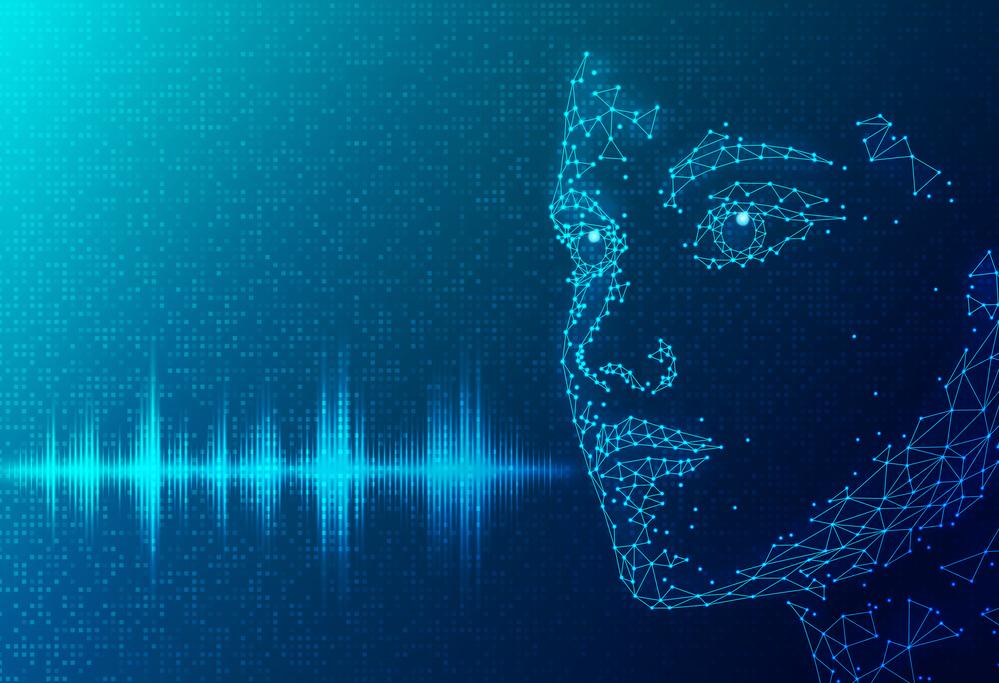Computer science is working on technology to translate text from one language to another, and it is available in the form of machine translation (MT). Nowadays, it is a viable tool with artificial intelligence, computing power, and language processing. People are still confused about Machine Translation – what is it and etc.

Overview of Machine Translation
MT defines translating content automatically from one language (source language) to another (target language) without human involvement. Remember, translation is an important application of computing power. It was a complex task for earlier computers and scientists in the 1950s.
In the past, this task needs enormous data, storage, and processing power beyond the capabilities of machines. During the early 2000s, hardware, software and data became capable of MT.
Early developers need statistical language databases to instruct computers for translation. It was not easy to train these machines because it required manual labor to add each language to the database. After 16 years, Google had a team testing artificial intelligence and neural learning prototypes to train translation engines.
After testing, the new methodology proves faster than the primary statistical machine engine for translation. It was designed to improve quality consistently over time. Undoubtedly, neural MT was effective, and Google adopted it as the main development model.
Scientists are still working on modern MT to add in translation technology. Several TMSs (translation management systems) incorporate MT in their solutions for workflows. Now, Machine Translation – what is it and etc. will be clear to you.
Machine vs. Automated Translation
Automated translation means automation in traditional translation tools and modern TMS (translation management system) to execute automatic repetitive translation. Content will have triggers to give cues to the system, and it may be automated. These triggers may be inserting standard text, including legal disclaimers in documents for databases, such as CMS (content management system).
Indeed, automated translation is beneficial for automating a text’s machine translation in localization workflow. Though, MT and automated translation are different terms and serve separate functions.
Types of Machine Translation
Currently, some common machine translation types are available with their own significance. See their details.
RBMT (Rule-based MT)
It is based on particular rules developed by programmers and language experts. These people refer to general grammar rules, semantic patterns of languages, and dictionaries to create a library of rules for translation (software).
Once you start translation, the library delivers a suitable translation of source content in a target language. Remember, the library consists of manually designed translation lexicons, and programmers can adjust them over time to improve the quality of translation.
MT or rule-based MT has serious drawbacks, including post-editing requirements. It requires humans to check translated text and remove flaws manually. A machine may generate low quality translation, and this option is useful in different situations.
SMT (Statistical Machine Translation)
It is free from grammatical or language rules. SMT uses computer algorithms that analyze and reference previously translated data and explores millions of opportunities to order words and small phrases and put small pieces of data together.
The outcome is a database containing translations based on the statistical likelihood that a particular phrase or a word in the source language can be another phrase or word in the target language.
This type needs a special statistical model of relationships between sentences, phrases, and words in texts. It implements the model to another language for conversion of new language elements. Moreover, it can improve rule-based MT but highlights some similar problems.
NMT (Neural Machine Translation)

Neural translation uses artificial intelligence and neural networks combined with statistical MT procedures to complete the job. It is highly complex, but an effective method.
Neural MT is becoming a standard in the development of MT engines. In this model, artificial intelligence plays an important role in learning several languages and improving knowledge similar to the human brain. It is an easy-to-use and accurate model with quick training capabilities. It is all about Machine Translation – what is it and etc.
Example-based MT
The example-based translation is a MT method involving a bilingual body with parallel data as its primary knowledge base during run-time. Indeed, it is an analogy-based translation and implemented as a reasoning case-based approach to machine learning.
It is primarily used to overcome the deficiencies of RBMT systems. Their weaknesses appear when translating between two different languages based on a structure like Japanese and English.
Hybrid MT
HMT (Hybrid translation) integrates the core of current methods, such as example-based MT, statistical-based MT, and rule-based MT, to deal with the weaknesses of each MT method. Hybrid MT uses different MT tactics with a single machine translation system. It is a combination of statistics and rules. Usually, it depends on two approaches: rules (post-processed) by statistics and statistics with rules.
Syntax-Based MT
It can translate syntactic units as an alternative to words. Sometimes, it is referred to as a sub-category of statistical machine translation. All types make it clear Machine Translation – what is it and etc.
Benefits and Drawbacks of MT
Statistical and rule-based MT are comparable, but it is referred to as a single solution as compared to both methods. The main benefits and drawbacks of MT for businesses are as under.
Benefits
- Faster translation and save time
- Increase productivity and deliver translations quickly
- Flexibility from different engines of MT
Drawbacks
- MT may not work with particular phrases because of limited context
- Industry-specific or complicated terms may be difficult to translate
- Content may feel pieced together or choppy in a target language. Data scientists and programmers are working to fix this error with advanced technology.
Why do you need machine translation?

In human history, maximum data was produced from 2016 to 2017. Remember, neural networks (statistical learning models) were used initially in image recognition and speech technology. Microsoft and Google initiated the testing and development of neural networks.
Undoubtedly, the scope of machine learning is increasing, and big companies consider this process for perfection. Indeed, neural networks allow MT engines to automatically train themselves through a process similar to the brain, such as trial and error. This method is known as deep learning.
Do you really need MT? Several people consider this question because they find this method odd. Human translations may not be replaced because humans use methods to approach each other, and machines cannot do this. For instance, machines cannot interpret emotions, but MT is useful to accelerate procedures and support human translation.
Machine Translation for Businesses
If you want to translate your digital content into other languages, MT can be an easy fix for complicated problems. MT may be an easy and fast solution depending on the content available for translation.
MT may offer translated content in a few seconds. However, human translators need additional time to translate content. Moreover, you cannot ignore the time required in managing, vetting, and finding translators.
MT is affordable for several businesses because you can get free translated text. If you cannot afford human translations, you can use MT options.
Is it possible for MT to replace human translation?
Now it is an important question for business organizations. Undoubtedly, MT can replace human translations. For example, service-based companies that use MT can help customers through instant chat. Moreover, it allows you to respond immediately to emails. A few examples prove when machine translation is a suitable option.
MT can be a risky option if you want to translate in-depth content, such as a mobile app or website. Remember, wrong translations may make your app or website look unprofessional. You cannot increase the risk for your brand by using free resources.
The wrong translation can offend your target and local users in the worst scenario. You cannot imagine the monetary losses of poor translation. Unfortunately, it can influence how users identify your brand. Remember, your business cannot afford negative backlash from a particular audience or an entire culture. Hence, hire a native speaker or a professional translator to save your brand.
However, MT is good in some other scenarios, but putting your brand at risk is not good. Make sure to get a quality and reliable translator. Feel free to ask for a demo to evaluate their translation skills. All this will help you to know Machine Translation – what is it and etc.
How to choose machine translation?
Do you want to know when and why to use machine learning? It depends on different factors that play an important role in selecting the type of MT.
Available Budget
Neural MT is expensive and complicated to train compared to statistical MT. The quality improvement may value any difference in cost. Several systems denounce their old statistical models to favor neural learning.
Involvement of Industry
Some particular industries need technical and complex language; therefore, sophisticated processing is required. Fortunately, neural MT can perform this.
Language Pairs and Data
Statistical MT may be sufficient for particular language pairs, including Latin-based dialects with the same syntax and grammar rules
Neural MT needs large quantities of data processing to learn and reap the benefits. It is suitable if you have large text.
Customer-facing vs. Internal Content
Sales or marketing materials define customer-facing data that reflect the quality of the brand. This type of data requires a sophisticated fusion of human translators (post-editing) and machine translation.
Internal documentation and employee communication can be achieved through basic MT if cost and time are important factors.
Right Time to Use Machine Translation
After understanding Machine Translation – what is it and etc., you have to understand the right time to use this process. You cannot use MT for all content. Remember, structured content, including IP, legal and technical documentation, and internal communications, need machine translation.
Indeed, MT is not good for branding and marketing content. For customer-facing content, you can use MT with human edition. Post-editing process will ensure that the content is properly localized.
Machine Translation Engines
Remember, machine translation works really well on training data. It can be custom or generic according to your requirements. Generic data is related to every translation performed with time by a MT engine. As a result, a general translation tool is ready for different applications, including formatting, full documents, voice, and text.
The specialized training data feed to MT for building a specialization in different areas, including discipline, design, programming, and engineering. See some general MT.
Amazon Translate
Amazon translate is a neural-based translator and it is closely incorporated with AWS (Amazon Web Services). Indeed, Amazon translate is accurate with some specific languages, including Chinese. Remember, these search engines are consistently improving quality and learning new things.
Google Translate

Google translate was introduced as the first MT engine with neural language procedures. This translator will learn from repeated uses. According to the number of languages, it is a leading machine, integration with Google, and usage.
Microsoft Translator

Microsoft translator has close integration with Microsoft products and MS office, providing immediate access to abilities within documents or software. You will find several other tools to understand Machine Translation – what is it and etc.




